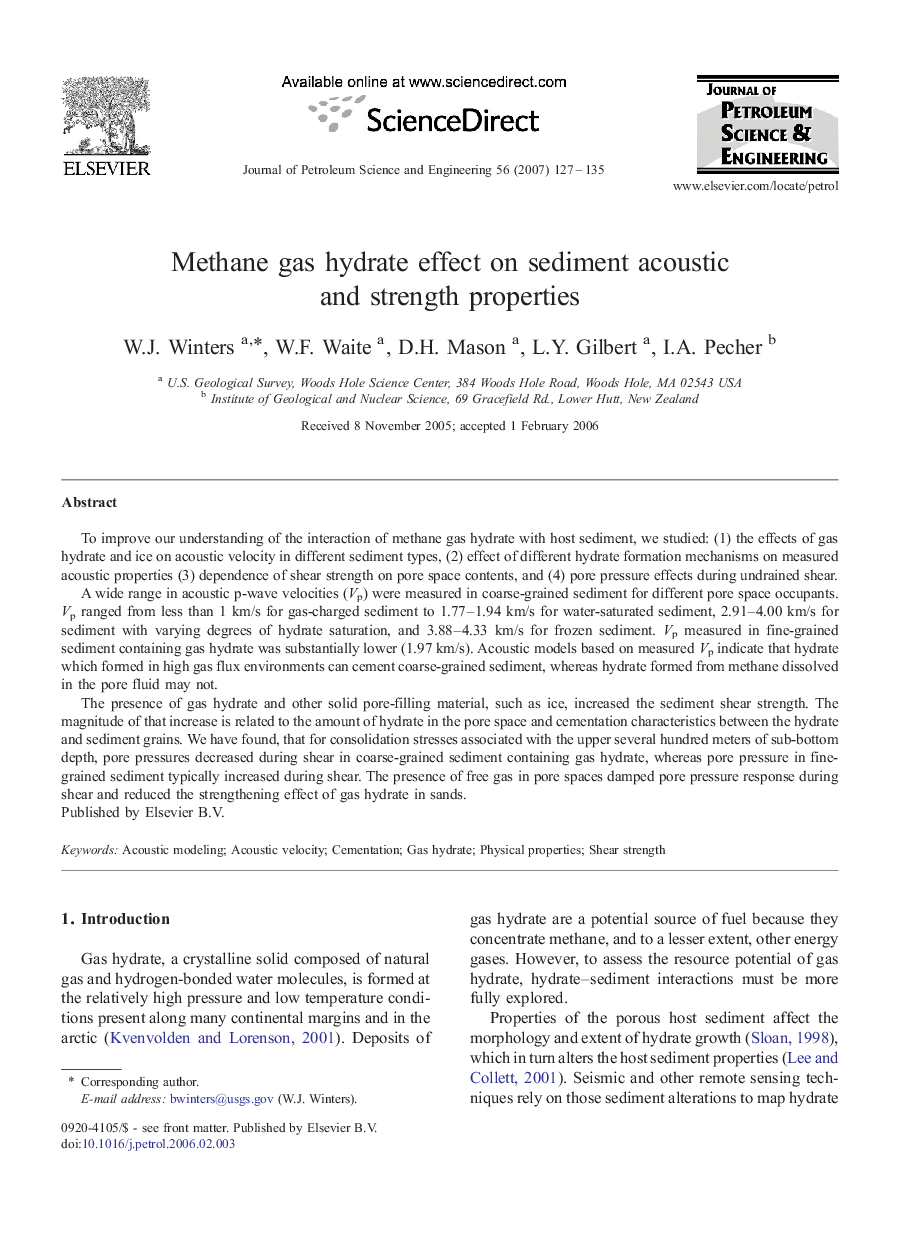| Article ID | Journal | Published Year | Pages | File Type |
|---|---|---|---|---|
| 1756446 | Journal of Petroleum Science and Engineering | 2007 | 9 Pages |
To improve our understanding of the interaction of methane gas hydrate with host sediment, we studied: (1) the effects of gas hydrate and ice on acoustic velocity in different sediment types, (2) effect of different hydrate formation mechanisms on measured acoustic properties (3) dependence of shear strength on pore space contents, and (4) pore pressure effects during undrained shear.A wide range in acoustic p-wave velocities (Vp) were measured in coarse-grained sediment for different pore space occupants. Vp ranged from less than 1 km/s for gas-charged sediment to 1.77–1.94 km/s for water-saturated sediment, 2.91–4.00 km/s for sediment with varying degrees of hydrate saturation, and 3.88–4.33 km/s for frozen sediment. Vp measured in fine-grained sediment containing gas hydrate was substantially lower (1.97 km/s). Acoustic models based on measured Vp indicate that hydrate which formed in high gas flux environments can cement coarse-grained sediment, whereas hydrate formed from methane dissolved in the pore fluid may not.The presence of gas hydrate and other solid pore-filling material, such as ice, increased the sediment shear strength. The magnitude of that increase is related to the amount of hydrate in the pore space and cementation characteristics between the hydrate and sediment grains. We have found, that for consolidation stresses associated with the upper several hundred meters of sub-bottom depth, pore pressures decreased during shear in coarse-grained sediment containing gas hydrate, whereas pore pressure in fine-grained sediment typically increased during shear. The presence of free gas in pore spaces damped pore pressure response during shear and reduced the strengthening effect of gas hydrate in sands.
